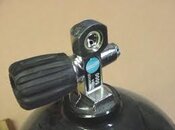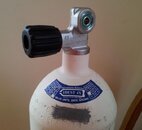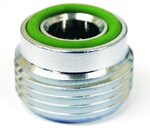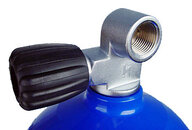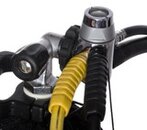If I am reading this right, you are wanting to put a 300 BAR DIN valve into a 232 BAR aluminium cylinder. My thoughts are its not a smart move as someone along the line may fill the cylinder to 300 BAR. If you want just DIN, why not fit a 232 BAR DIN, which will take a 300 BAR DIN regulator but will align with the cylinder being 232 BAR. I know you can screw a 300 BAR line into it or a 232 BAR line and pump it to 300 BAR. I guess it goes against my grain to do it and potentially cause hurt to someone because they make a mistake based on what one has done.
Perhaps the words I am looking for are technically wrong and ethically wrong, but very doable and probably not illegal.
All my DIN regs are 300 BAR so I can fit them to 300, 232 DIN or 232 YOKE with insert. All my cylinders are 232 BAR with appropriate 232 BAR DIN valves
Love the pics a great way to show what you mean.




